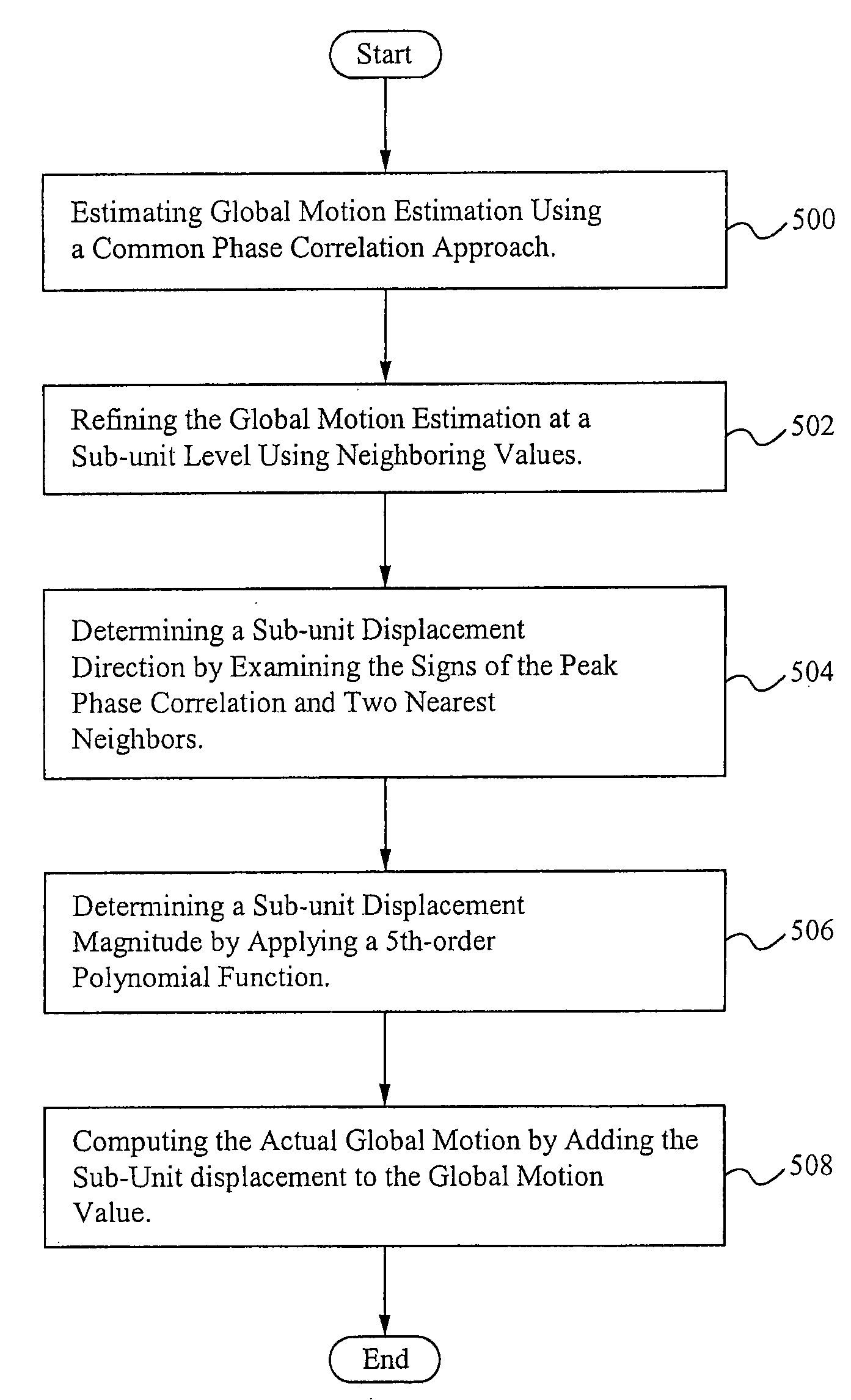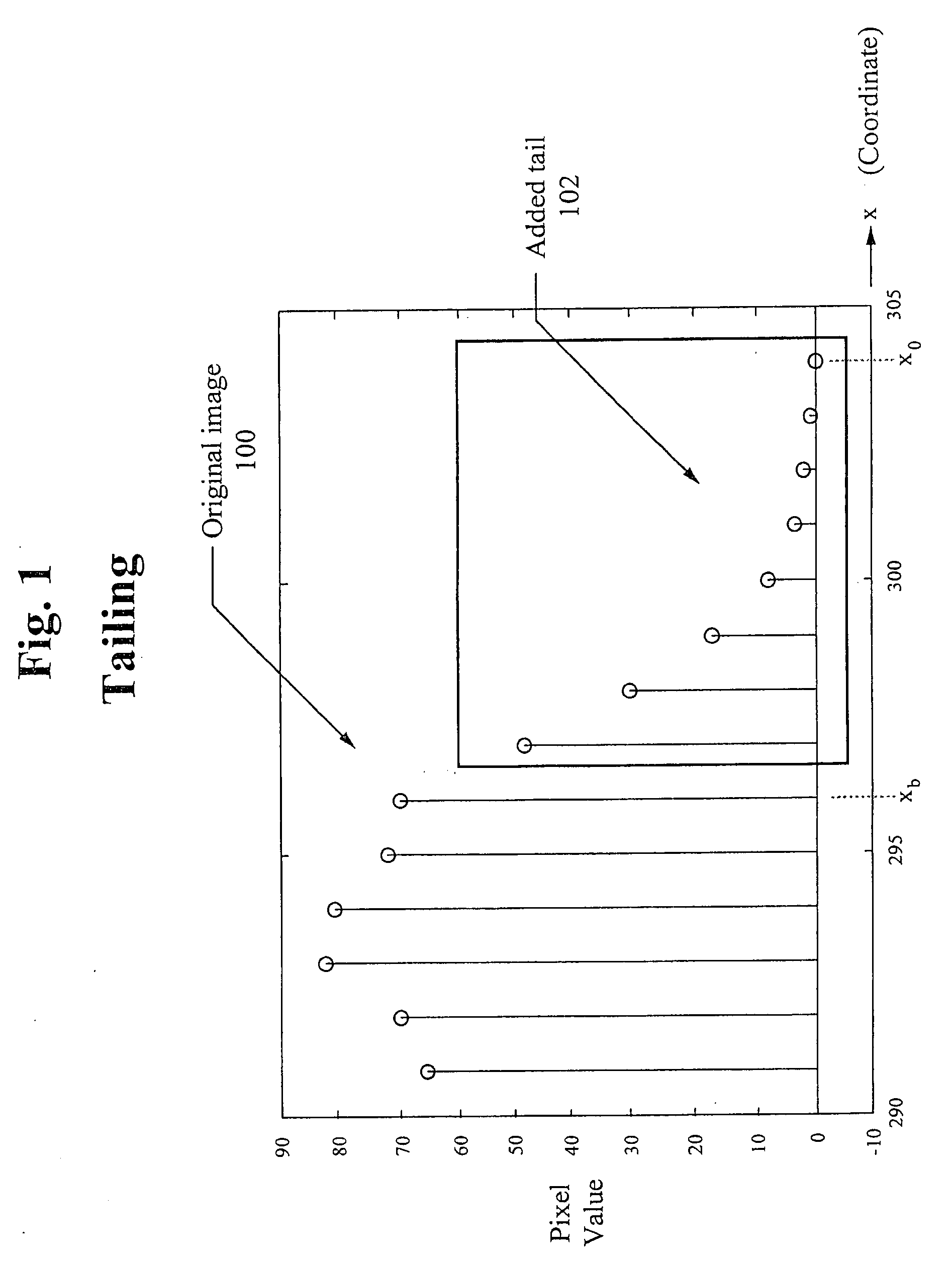High accurate subspace extension of phase correlation for global motion estimation
a global motion estimation and phase correlation technology, applied in the field of video motion estimation, can solve the problems of insufficient accuracy of global motion estimation general algorithms, inability to robust to noise or illumination variation, and inability to accurately estimate the sub-unit accuracy of global motion estimation, etc., to achieve the effect of eliminating boundary effects and high sub-unit accuracy
- Summary
- Abstract
- Description
- Claims
- Application Information
AI Technical Summary
Benefits of technology
Problems solved by technology
Method used
Image
Examples
Embodiment Construction
[0017]When estimating video motion, there are two different kinds of motion: global motion and local motion. Global motion exists when acquiring video and the entire (global) video moves, such as when a user's hand shakes or when the user pans the video camera. Local motion on the other hand is when an object within an entire scene moves, such as a dog running in a park while the background of the grass and trees is relatively stationary.
[0018]To correct global motion which stems from a user's hand shaking or other movement with a video camera, motion estimation is implemented. Phase correlation is used for image registration between images, or in other words, phase correlation finds the difference between images. Thus, phase correlation is able to be applied for global motion estimation in video processing by determining the difference between images which corresponds to the movement between frames of a video. A common approach to phase correlation is described in a set of equation...
PUM
 Login to View More
Login to View More Abstract
Description
Claims
Application Information
 Login to View More
Login to View More - R&D
- Intellectual Property
- Life Sciences
- Materials
- Tech Scout
- Unparalleled Data Quality
- Higher Quality Content
- 60% Fewer Hallucinations
Browse by: Latest US Patents, China's latest patents, Technical Efficacy Thesaurus, Application Domain, Technology Topic, Popular Technical Reports.
© 2025 PatSnap. All rights reserved.Legal|Privacy policy|Modern Slavery Act Transparency Statement|Sitemap|About US| Contact US: help@patsnap.com



